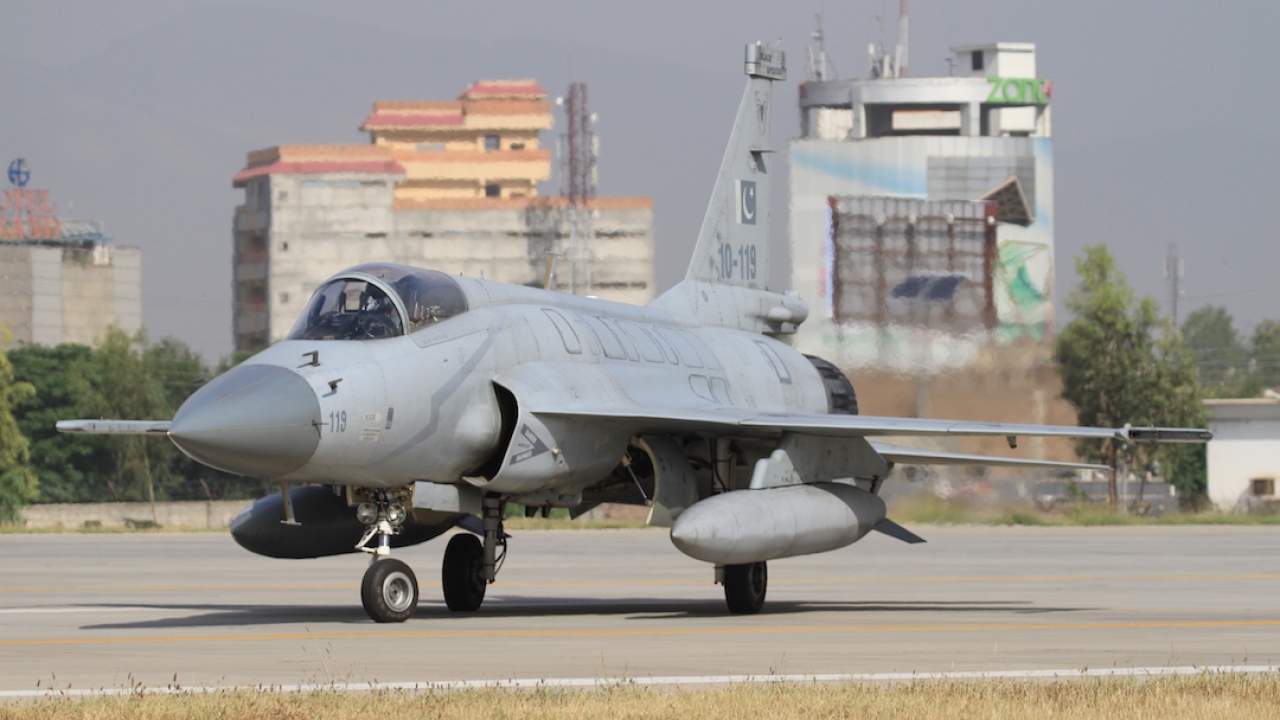Thunder struck?
During July, there was a lot of speculation in the media surrounding the purchase by the Iraqi government of 12 Pakistan Aeronautical Complex (PAC) in Kamra JF-17 Thunder aircraft. Alan Warnes takes a closer look.

A PAF JF-17 taxies to the end of the runway for departure. The Thunder has been serving the PAF for 15 years now. PICTURE: Alan Warnes
Pakistan and Iraq enjoy close relations, with the Iraqi Air Force having already signed a deal for 12 PAC MFI-17 Super Mushshaks in October 2021, that should have led to the aircraft being delivered two years later.
That came some five years after an initial contract had been postponed due to Iraq’s budgetary constraints.
There has always been a lot of speculation that the relationship could lead to a JF-17 purchase. As a fighter, it would make a lot of sense – the block III variant comes with a cutting-edge KLJ-7A airborne electronically scanned array (AESA) radar.
While the Pakistan Air Force (PAF) will operate their JF-17s with new Chinese weapons, it is unclear whether Iraq would be permitted by China to buy them because of their close relationship with the USA.
The China Electronics Technology Group Corporation (CETC) KLJ-7A is one of several improvements over the older block I/II JF-17s. The block III houses new avionics, better electronic warfare systems, increased payload and more sophisticated weapons. It will undoubtedly be the ultimate JF-17, and with an AESA radar, the capability to employ longer-range weapons and track multiple aircraft. Other than the AESA radar, the main difference between the block II and block III JF-17s, is a helmet-mounted display (HMD).
The PAF is working on with companies in China and Pakistan on a three-axis fly-by-wire system, which is already functioning in the two-seater JF-17B, an enhanced electronic warfare (EW) management system and a chin-mounted hard point.
With the PAF acquiring the aselsan targeting pod (known simply as the aselpod), this has allowed a much-needed boost to the jet’s air-to-ground capability. The rest of the fleet was also expected to receive the Turkish system.
There is speculation that new Chinese beyond visual range air-to-air missile, like the PL-10 and PL-15 could also be included in their future armoury, although no one at the PAF is prepared to confirm this.
In early 2021, the author was told by the then PAC Kamra chairman, air marshal Noman that only 30 of the 50 Block IIIs expected to be ordered, had actually been contracted, but the rest may come later. It is unclear if that is still the case.
The first JF-17 block III made its maiden flight at Chengdu Aerospace Corporation on December 15, 2019.
A second aircraft followed it into test and evaluation during August 2020, which led to the first serial production block III assembled at PAC Kamra to be delivered to the PAF in late 2022, after the test and evaluation work had been completed.
In March this year, reliable sources indicated the block IIIs are now operational.
The radar was built under license at PAC Kamra’s avionics production factory (APF). This facility has worked on radars in the past like the Italian FIAR (now Leonardo) grifo radars for both the Chengdu F-7P/PG and Dassault Mirage IIIs and the original KLJ-7 in the JF-17 block I/IIs.
With a KLJ-7A production line being created at APF, there is every likelihood the earlier block II JF-17s could be upgraded too, and even the block Is.
The KLJ-7A will eventually be retrofitted into the JF-17B too, so making it a very capable tactical trainer, which several foreign forces are currently studying.
The PAF has taken delivery of 26 dual-seat JF-17Bs, and while most are being used to train pilots on the operational conversion unit at Mianwali, most of the operational squadrons have a couple to train new pilots tactically and allow senior pilots to keep their flying currency.
Both China and Pakistan retain a joint marketing agreement, that so far has seen Myanmar (by China) acquire seven, including two dual-seats in 2018/19 and Nigeria (sold by Pakistan) has acquired three that were delivered in 2021.
Stay up to date
Subscribe to the free Times Aerospace newsletter and receive the latest content every week. We'll never share your email address.

